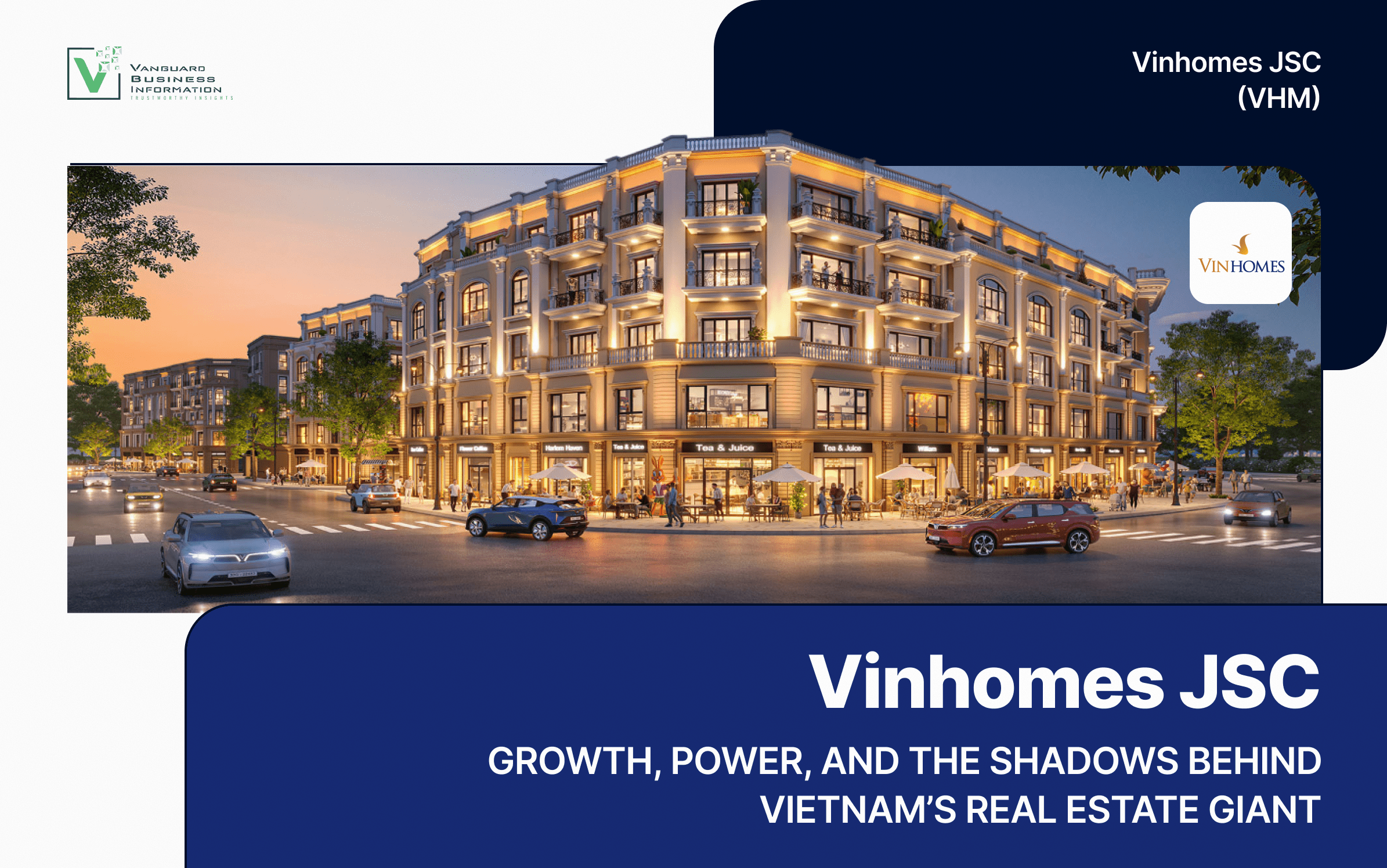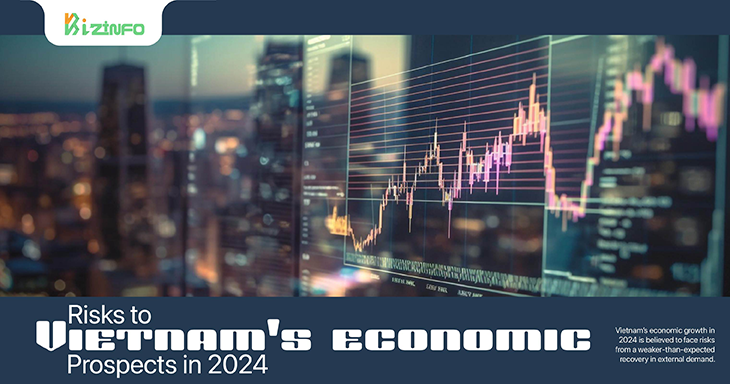Published Sep 2025
Vinhomes JSC: Growth, Power, and the Shadows Behind Vietnam’s Real Estate Giant
Vinhomes Joint Stock Company (VHM) has reshaped Vietnam’s urban landscape through high-end projects and integrated ecosystems. Backed by Vingroup, it shows strong financials but currently faces rising concerns: a sharp drop in working capital, VinFast-related pressure, market saturation, and limited transparency. This article explores the company’s opportunities, hidden risks, and the critical choices that will shape its legacy.

Vinhomes Joint Stock Company (VHM) has established itself as Vietnam’s largest and most influential residential real estate developer. Known for its large-scale urban projects and integrated ecosystems, Vinhomes has reshaped Vietnam’s urbanization trajectory. Backed by its parent company, Vingroup, it offers a brand that blends prestige, lifestyle, and convenience.
But beneath the polished façade lies a complex picture of overexpansion, cross-subsidization into costly ventures like VinFast, and systemic land acquisition and governance opacity. As Vietnam’s property market matures, the company must confront structural challenges that cannot be hidden behind glossy marketing campaigns.
Redefining Urban Living in Vietnam
Vinhomes has become synonymous with modern urbanization. Its projects offer far more than homes, from Vinhomes Riverside in Hanoi to Vinhomes Central Park in Ho Chi Minh City. They are self-contained cities with international schools, hospitals, shopping centers, and entertainment facilities.
Founded in 2008 and listed on the Ho Chi Minh Stock Exchange (VHM), the company reported impressive financials by the end of 2024:
- Total Assets: USD 23.18 billion
- Equity: USD 9.07 billion
- Profit: USD 1.44 billion
- Employees: 12,858 (including subsidiaries)
These numbers reflect the massive scale and influence Vinhomes has gained in just over a decade. Riding Vietnam’s urban migration wave and middle-class expansion, the company was well-positioned to dominate.
Financial Performance: Growth with Warning Signs
Based on the Company Report from VNBIS, Vinhomes has shown consistent asset and equity growth, but the figures also reveal underlying risks. Between 2022 and 2024, profits grew modestly, yet revenue dipped in 2024, and working capital collapsed by nearly 78%, raising questions about liquidity and capital allocation.
Financial Performance Overview (2022–2024)
|
Metric |
2022 |
2023 |
2024 |
YoY 2024 |
|
Total Assets |
USD 14.86B |
USD 18.27B |
USD 23.18B |
▲ +26.89% |
|
Owner’s Equity |
USD 6.10B |
USD 7.50B |
USD 9.07B |
▲ +20.87% |
|
Total Sales |
USD 2.56B |
USD 4.25B |
USD 4.20B |
▼ -1.19% |
|
Profit After Tax |
USD 1.20B |
USD 1.38B |
USD 1.44B |
▲ +4.59% |
|
Working Capital |
— |
— |
USD 285M |
▼ -77.78% |
The steep decline in working capital is especially concerning. Analysts point to the possibility that Vinhomes’ cash flow is being diverted to support Vingroup’s other ventures, particularly the high-cost VinFast EV project, which continues to absorb enormous capital while struggling to achieve profitability.
The Vingroup Connection: Strategic Strength and Heavy Burden
Vingroup controls 73.5% of Vinhomes, a relationship that gives the company access to financial muscle and political backing. The synergy with other Vingroup subsidiaries—Vinmec (healthcare), Vinschool (education), Vincom (retail)—has allowed Vinhomes to build all-in-one urban ecosystems unmatched by competitors.
However, this connection has become a double-edged sword. While Vinhomes remains profitable, its liquidity is deteriorating as it increasingly shoulders the financial weight of Vingroup’s broader ambitions. If capital continues flowing disproportionately toward VinFast and other ventures, Vinhomes risks weakening its core business—jeopardizing construction quality, project delivery, and long-term growth.
Luxury Saturation and Affordable Housing Gaps
Vietnam’s property market has evolved rapidly. In the early 2010s, Vinhomes thrived on meeting the demand for premium residential complexes. But today, signs of saturation in the luxury segment are evident.
Meanwhile, Vietnam faces a growing affordable housing crisis. Migrant workers, young families, and lower-income households struggle to find livable homes. Vinhomes, with its resources and brand power, could help fill this gap. However, its continued focus on luxury developments misses a key economic and social opportunity.
The Criticism Few Voice
In Vietnam’s tightly controlled media environment, public criticism of powerful corporations is rare. Still, concerns about governance, land acquisition, and environmental impact persist quietly in academic and business circles.
- Vinhomes' land acquisition processes often involve prime, formerly state-owned land parcels, raising suspicions about transparency and fairness in auctions.
- Large-scale projects in peri-urban areas have triggered concerns about flooding, congestion, and ecological damage, yet few independent environmental assessments are available.
- With its monopoly-like dominance, Vinhomes has limited competition, making it difficult for smaller developers to access land or financing.
Without independent oversight or strong civil society checks, Vinhomes enjoys considerable freedom—but that freedom carries reputational risks.
Strategic Risks in the Vietnamese Context
In open-market economies, related-party capital transfers, opaque land deals, and heavy reliance on group financing would trigger regulatory or media scrutiny. In Vietnam, such issues often go unchallenged.
This silence is dangerous. A lack of transparency may undermine foreign investor confidence, especially as Vietnam integrates deeper into global markets and faces rising expectations around corporate governance and ESG standards.
Recommendations for a Sustainable Future
For Vinhomes to maintain its leadership while safeguarding its long-term stability, several strategic shifts are needed:
- Reinforce financial independence: Reduce reliance on cash transfers to VinFast and protect liquidity for core real estate operations.
- Diversify product lines: Enter the affordable housing segment to tap into real demand and reduce overexposure to luxury saturation.
- Enhance transparency: Publicly disclose land acquisition processes, publish third-party environmental audits, and adopt stronger governance practices.
- Prepare for regulatory change: Anticipate stricter land laws and competition policies by strengthening compliance systems now.
These steps would protect shareholder value and elevate Vinhomes as a model for responsible development in Vietnam.
Building Cities or Mortgaging the Future?
Vinhomes has undoubtedly transformed Vietnam’s urban landscape. Its mega-projects offer modern, integrated living environments that rival global standards. Yet Vingroup's financial pressures, market saturation, and opaque governance practices cloud its future trajectory.
As Vietnam’s economy matures and global standards tighten, Vinhomes must decide whether to remain a profit engine for its parent group or become a true leader in sustainable, inclusive urban development.
The answer will shape the company’s legacy and the future of Vietnam’s cities.


